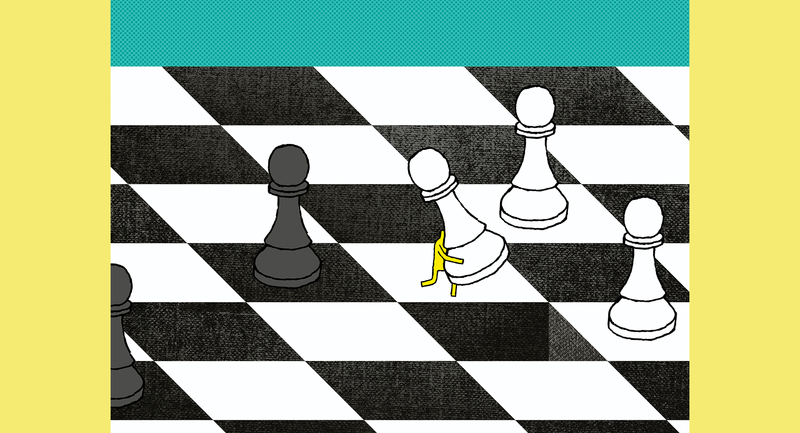For tonight's homework,
Write the 10 spelling words 3 times each.
Write definitions of the 15 science vocabulary words.
Do the math problems on page 27, problems 1–20 on dividing fractions.
Check any homework hotline, and you're likely to find similar homework assignments, which look an awful lot like those we remember from school. But do these tasks really reinforce learning? Do they focus on rote learning—or on deeper understandings?
The Fundamental Five
The best homework tasks exhibit five characteristics. First, the task has a clear academic purpose, such as practice, checking for understanding, or applying knowledge or skills. Second, the task efficiently demonstrates student learning. Third, the task promotes owner ship by offering choices and being personally relevant. Fourth, the task instills a sense of competence—the student can success fully complete it without help. Last, the task is aesthetically pleasing—it appears enjoyable and interesting (Vatterott, 2009).
Hallmark 1: Purpose
Let's start by examining how purposeful tonight's homework assignments are and whether there are better alternatives.
The purpose of the spelling homework—"Write the 10 spelling words 3 times each"—might be to practice spelling words correctly—a rote memory task. Many teachers believe that writing is a good method, especially if they learned well that way when they were students. But not all students remember by writing. Our goal is to give students methods that are purposeful for them, methods that work for their learning styles.
A better way might be to allow students to design their own task:
Create your own method to practice spelling words or choose one of the following: Write or type the words three times, spell them out loud, use Scrabble tiles to spell them, trace them with your finger, or create a puzzle using the words.
The teacher could also make the task more meaningful by having students connect the spellings to a spelling rule (such as "i before e, except after c").
The second assignment is to "Write definitions of the 15 science vocabulary words." Although the words may have been discussed in class, they're probably new; students are often expected to learn new words to prepare for reading or a class discussion.
But does writing definitions really help us learn what words mean? Writing definitions is a low-level rote task—students best learn the meanings of new words by using them in context. A better task might be one of the following:
Show that you know the meaning of the science vocabulary words by using them in sentences or in a story.
For each vocabulary word, read the three sentences below it. Choose the sentence that uses the word correctly.
A more thoughtful way to understand and remember what words mean is to assign the vocabulary words as an application task after the lesson. For instance, one middle school teacher has students build and launch rockets. After they launch their rockets, the students add the definitions of such words as force, speed, acceleration, and momentum to their notebooks. At that point, the definitions have meaning and connect to the students' experience (Vatterott, 2007).
The third homework assignment—"Do the math problems on page 27"—is more complicated because we don't know whether the purpose of the assignment is to check for understanding of dividing fractions or to practice dividing fractions.
Let's assume the purpose is to practice dividing fractions. The math teacher demonstrates how to divide fractions and monitors the students while they do practice problems in class. Because students can successfully complete the problems immediately after instruction, the teacher assumes that the students understand the concept. The teacher then assigns 20 problems as practice for homework. However, when some of the students get home, they realize that they did not fully understand how to do the problems—and what the teacher thought was practice turns out to be new learning. The students struggle or, worse, do the 20 problems the wrong way.
Ideally, homework should provide feedback to teachers about student understanding, enabling teachers to adjust instruction and, when necessary, reteach concepts before assigning practice. Assigning practice prematurely can cause student frustration and confusion.
Practice is more effective when distributed in small doses over several days or weeks (Marzano, Pickering, & Pollock, 2001). That is, distributed practice is more effective than mass practice. A student may need to practice a math operation 50 times to master it—but not all in one night! Instead of the traditional 20–30 problems each night, a better math assignment is two-tiered—for example, three questions or problems to check for understanding of today's lesson and 10 questions or problems to practice previous learning.
Hallmark 2: Efficiency
Some traditional tasks may be inefficient—either because they show no evidence of learning or because they take an inordinate amount of time to complete but yield little "bang for the buck." Both students and parents tend to view tasks that don't appear to require thinking as busywork.
Projects that require nonacademic skills (such as cutting, gluing, or drawing) are often inefficient. Teachers assign projects like dioramas, models, and poster displays with all the best intentions—they see them as a fun, creative way for students to show what they have learned. But unless a rubric clearly spells out the content requirements, projects may reveal little about students' content knowledge and much more about their artistic talents (Bennett & Kalish, 2006). Even content-rich projects can be inefficient in terms of time spent. Teachers often don't realize how many hours these projects take and how tedious they may be for both student and parent.
There are more efficient ways to accomplish the same goal and better demonstrate student learning. Instead of creating a diorama of life during the Reconstruction after the U.S. Civil War, students could write a diary entry as though they were living in the time, discussing daily life, race relations, and laws that affected them. Instead of building a model of the solar system, students could create a poster to show the planets' temperature extremes, periods of rotation in Earth time, and the importance of inertia and gravity to the motion of the planets. Students could create a video that they post on YouTube or a game to demonstrate their knowledge of the steps in a process, such as how the digestive system works, how a bill becomes a law, or how to solve an algebra problem (Vatterott, 2007).
Hallmark 3: Ownership
As a teacher once said, "I never heard of a student not doing his work; it'sour work he's not doing." When we customize tasks to fit student learning styles and interests, the task becomes theirs, not ours. The goal of ownership is to create a personal relationship between the student and the content (Vatterott, 2009).
One of the easiest ways to promote ownership is through individual research. For instance, if the class is studying the history of Europe, students could write a report about the country of their choice. They could choose a topic they want to learn more about. Even though for all reports students would use the same rubric—which would focus on facts about government, economy, culture, or geography—students could write a traditional research paper, create a PowerPoint presentation, or design a travel brochure.
Instead of having students write out multiplication tables, a more meaningful assignment would ask, "What is the best way for you to practice your multiplication tables?" Some students may learn better by reciting them, creating a table, or setting them to music. Thinking about how they learn best makes the learning more relevant.
When students practice reading (and grow to enjoy reading for pleasure), choice of what, when, and how much to read is especially important. Typical assignments dictate what as well as how much: "Twenty minutes each night, two chapters from the novel each night, or 30 pages from your textbook each night." Forcing students into those requirements may have the adverse effect of students actually reading less than they would if they were not "on the clock" (Kohn, 2006).
When teachers tell students how much to read, students often just read to an assigned page number and stop. A California mother wrote,
Our children are now expected to read 20 minutes a night and record such on their homework sheet. What parents are discovering (surprise) is that those kids who used to sit down and read for pleasure … are now setting the timer, choosing the easiest books, and stopping when the timer dings. … Reading has become a chore, like brushing your teeth. (Kohn, 2006, pp. 176–177)
Then comes the tedious task of judging whether the students met the requirement. The reading log is the typical proof: "Each night, write down the author, title, and number of pages you read, how much time you spent reading, and the date. Have your parent sign the log each night." Whew! Not only are reading logs time-consuming, but also focusing on documenting takes a lot of the joy out of reading (Bennett & Kalish, 2006).
This might be a better approach:
Try to read an average of 30 minutes each night. Once a week, estimate how much time you've spent reading. Write a short paragraph about what you've been reading.
If we want to promote ownership and encourage students to enjoy reading, we must go beyond the assigned reading list. One student who usually enjoyed reading lamented, "I just want to read something that I want to read!" We should broaden what "counts" as reading to include such nontraditional sources as blogs, websites, and magazines. Instead of worrying about whether students did the reading, we should be focusing on whether the reading did them any good.
Hallmark 4: Competence
If all students are to feel competent in completing homework, we must abandon a one-size-fits-all approach. Homework that students can't do without help is not good homework; students are discouraged when they are unable to complete homework on their own (Darling-Hammond & Ifill-Lynch, 2006; Stiggins, 2007). To ensure homework is doable, teachers must differentiate assignments so they are at the appropriate level of difficulty for individual students (Tomlinson, 2008).
Struggling students may require fewer questions, less complex problems with fewer steps, or less reading. Some students may be given abbreviated reading assignments, adapted reading packets, or simplified directions. One of the simplest ways to help struggling students is to require less writing, with fewer blanks to fill in, or answers that the student can circle instead of writing out. Although some students may create a graphic organizer, others may be given a graphic organizer. Teachers might give some students word banks, copies of their notes, or hint sheets. English language learners may benefit from assignments containing pictures that give clues to meaning in assignments with difficult vocabulary and may find it easier to complete work in their native language first.
The amount of work is a huge obstacle to feelings of competence for some students. A task that takes the average student 15 minutes to complete could take another student an hour. It doesn't make sense for slower students to have to spend more time on homework than other students do—instead, teachers should simply give them less work (Goldberg, 2007).
A simple means of differentiating is to make homework time-based instead of task-based. Instead of assigning all students 20 questions to answer, assign all students to complete what they can in a specified amount of time: "Answer as many questions as you can in 30 minutes; work longer if you like." In one 5th grade classroom, the rule is "50 minutes is 50 minutes." Students are not expected to work more than 50 minutes each night. If students have homework in math, science, and reading and they spend 50 minutes on science and math, parents simply write a note saying, "Rhonda spent her 50 minutes on science and math and had no time for reading tonight" (Vatterott, 2009). Teachers who are uncomfortable with this method might want to prioritize subjects ("Do the reading first, then math, then science") or ask students to spend a little time on each subject ("Spend at least 10 minutes on each subject. You do not need to work more than 50 minutes total"). A better solution may be to limit homework to one or two subjects each night.
Teachers must also take care to adequately explain assignments—preferably in writing—and structure them so students know how to complete them (Darling-Hammond & Ifill-Lynch, 2006). "Read Chapter 4" is an inadequate direction at any grade level. Reading to acquire information or think critically about the content requires a scaffolded task. Teachers may rely on worksheets, but when students can simply fill in the blanks, they aren't necessarily demonstrating understanding of the content. A more meaningful scaffold would focus on broader concepts and would include graphic organizers, big-picture questions, or reflective tasks, such as the following:
List the four most important ideas in Chapter 4.
Keep a journal. After each chapter section, write a reaction to what you read.
During your reading, place sticky notes on the parts you have questions about.
During your reading, place sticky notes on the parts you found most interesting to discuss in class.
When we want students to focus on the main ideas of a novel or short story, high-interest and high-emotion questions such as these work well:
Which characters best typify the following virtues: honor, integrity, strength? What did they do that shows that virtue?
Which characters best typify the following vices: greed, jealousy, arrogance? What did they do that shows that vice?
With which character do you most identify and why?
How does the story relate to life today? (Vatterott, 2007)
Teachers need to adequately structure complex tasks. For example, if the assignment is for 4th graders to research and write a report about a time period or an important person, do all 4th graders know how to do research? Students not only need a rubric that details what they must include in the report, but they also need instructions on how to find resources, steps to follow in organizing the process, and suggested websites. Long-term projects require monitoring, with intermittent due dates for outlines and rough drafts.
If the homework assignment is to "Study for the test," does that mean memorize facts, review concepts, or learn new material not covered in class? And how do students know what it means? Although a study guide or take-home test that shows students exactly what they need to know is helpful, they don't necessarily have to write or complete anything to study. Teachers should encourage students to create their own best method of reviewing the information, suggesting possible options, such as organizing notes into an outline, writing test questions for themselves, putting important information on note cards, or studying with a partner.
Hallmark 5: Aesthetic Appeal
Every day, students make decisions about whether to do a homework assignment on the basis of their first impressions. The way homework looks is important. Five-page worksheets or endless lists of definitions or math problems look boring and tedious. As a gourmet cook would say, "Presentation is everything." Wise teachers have learned that students at all levels are more motivated to complete assignments that are visually uncluttered. Less information on the page, plenty of room to write answers, and the use of graphics or clip art make tasks look inviting and interesting (Vatterott, 2009).
In an effort to create appealing tasks, teachers sometimes compromise learning. A word search may look like fun, but it has little value in reinforcing spelling and can be a torturous task. A better task would be for students to create their own pattern of content-related words, as in Scrabble. Likewise, crossword puzzles are fun, but students may benefit little from matching definitions with words when the focus is on solving the puzzle. A better task would be for the students to find connections between the concepts that the words represent. For example, students might group words as "feeling words" or "action words," as nouns or verbs, or as words with one or two syllables.
Free to Learn
Meaningful homework should be purposeful, efficient, personalized, doable, and inviting. Most important, students must be able to freely communicate with teachers when they struggle with homework, knowing they can admit that they don't understand a task—and can do so without penalty.









